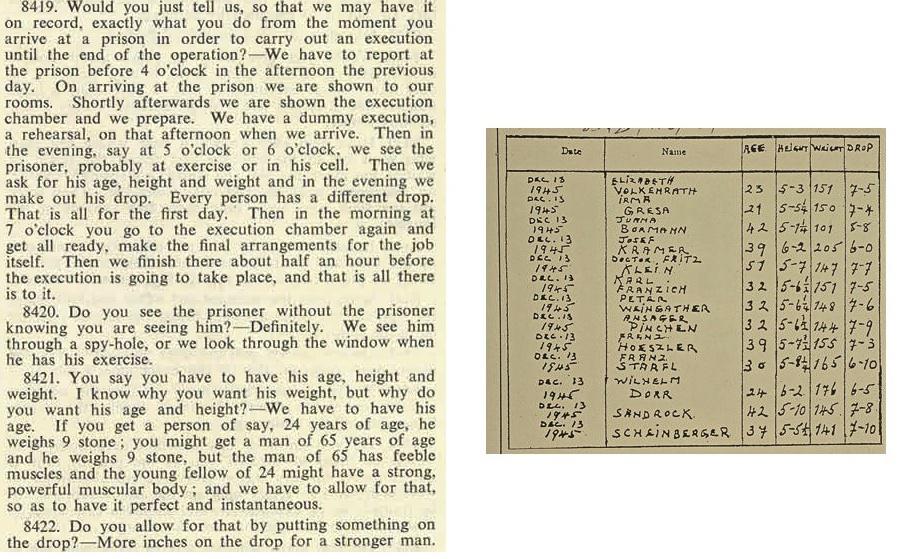The Vault is Slate’s new history blog. Like us on Facebook; follow us on Twitter @slatevault; find us on Tumblr. Find out more about what this space is all about here.
Albert Pierrepoint was an unlikely mid-century celebrity. When he wasn’t managing a pub in Manchester, he earned his keep as Britain’s last official hangman.
Pierrepoint was born in Yorkshire in 1905. His father and uncle were hangmen, part of a small class of state-appointed “official executioners,” and young Albert aimed to take up their trade. As a schoolchild, he wrote in an essay, “When I leave school I should like to be the Official Executioner.”
After some early trouble finding a position, Pierrepoint earned a reputation as an artful and efficient hangman, and his career blossomed. By the 1940s, the British Crown was flying him far and wide to hang criminals throughout the empire and beyond. He is said to have executed some 200 Nazis after World War II.
In the document on the left below, from 1950, Pierrepoint describes his technique to a Royal Commission on Capital Punishment, which was set up by the Home Secretary in 1949 to consider whether “capital punishment for murder should be limited or modified.”
“We have a dummy execution, a rehearsal, on that afternoon when we arrive [at a prison.] In the evening… we see the prisoner, probably at exercise or in his cell. Then we ask for his age, height and weight and in the evening we make out his drop. Every person has a different drop.”
In 1956, Pierrepoint resigned after a disagreement with the Home Office over fees. In 1969, British MPs voted to abolish the death penalty.
In his 1974 autobiography, Executioner: Pierrepoint, Albert revealed his own misgivings about capital punishment:
“It is said to be a deterrent. I cannot agree…. I do not now believe that any one of the hundreds of executions I carried out has in any way acted as a deterrent against future murder. Capital punishment, in my view, achieved nothing except revenge.”
Thanks to The National Archives in London, UK.

L: Account given by Albert Pierrepoint to the Royal Commission on Capital Punishment, 1950; The National Archives. R: Pierrepoint’s diary noting Nazi prisoners’ heights and weights, 1945; Surviving History.